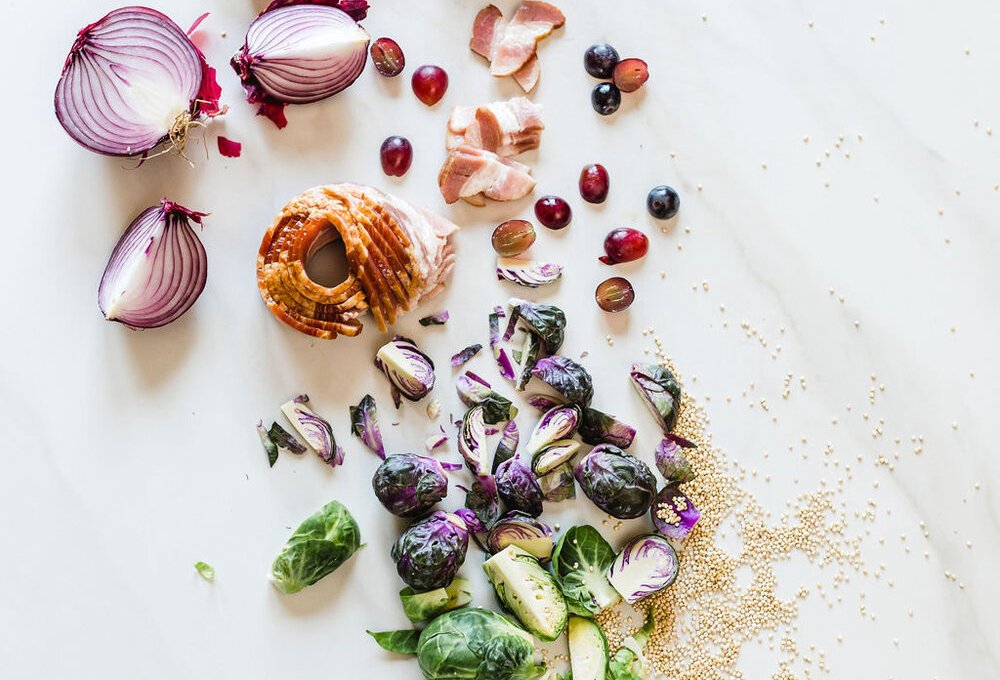After several unprecedented years, the foodservice industry is well on its way to recovery.
Your restaurant is busy again. Customers still love the menu, and local reviews are still solid.
You're more focused than ever on that critical difference between profits and bottom line.
Overall, industry analysts peg acceptable average food costs between 28% and 35%.
The numbers don’t leave much room for error.
A looming recession, ongoing inflation and increased food costs complicate the picture.
From white tablecloth restaurants to QSR chains, foodservice operations are dealing with ever-evolving challenges.
In the face of these economic shifts, it's more important than ever to zero in on how to cut food costs in restaurants.
You need to update old strategies and implement new ones. We can help.
15 Restaurant Food Cost Saving Ideas
If there were just one weird secret about how to reduce food costs in restaurants, someone would have bottled it, sold it and made a fortune by now.
Instead, successfully controlling food costs depends on 15 routines involving both management and staff.
1. Honestly Assess What You Serve
When you’re looking over restaurant cost saving ideas, don’t let fondness for menu items cloud your vision.
Just because you’ve always served a favorite recipe doesn’t mean that it’s still ordered often enough to keep it profitable.
What kind of prep time goes into an expensive entrée? Has it become a signature dish that’s past its prime? Are you over-serving portions or sides?
Give everything you serve an honest, detailed assessment.
2. Be Willing to Trim
Turn that hard-hitting menu assessment into an action plan.
Focus on what sells best. Be willing to trim away less-popular selections. Think of it as an opportunity to rethink menu development and design.
Slimming down your menu results in fewer choices, but it also speeds up customer decisions.
That improves their dining experience by reducing the time between ordering and being served.
Fewer selections mean stocking fewer ingredients. A smaller menu simplifies inventory control. It also improves kitchen efficiency, but most importantly, trimming the menu holds down food costs.
3. Crunch All the Numbers
Dig into the current cost of every food item purchased.
You know prices have gone up, but determine exactly what you're spending on specific ingredients.
Next, track usage and yield for each item.
Crunching the numbers gives you a deeper understanding of overall food costs.
Drilling down into the details lets you adjust recipe costing strategies. The analysis can help you make cost-effective decisions about everything from ingredients to portion size.
4. Target Your Top 10
Even the busiest foodservice professionals can quickly list which items are key to their operations and how frequently they're ordered.
These ingredients are usually purchased in bulk, and they're often expensive.
Fluctuating prices on must-have items can have an out-sized impact on food costs. Tracking them carefully can help you anticipate budget-busting increases.
Post a of list of your top 10 items in pantries and walk-ins. Ask employees to routinely monitor ingredient condition and depletion.
Targeted inventory inspections reduce spoilage and waste, and that holds down your food costs.
5. Buy the Best and Store It Right
A low case price on produce isn’t always your best deal.
Deeply discounted perishables usually have limited shelf lives, and that can waste valuable food-cost dollars.
Culling spoiled inventory wastes employee time on the clock too.
Do more than inspect incoming orders.
Set up a rotation system, implement first-in-first-out policies, and keep equipment in top shape.
A walk-in on its last legs does more than increase utility bills. Its failure can ruin expensive inventory and complicate operations for days.
6. Always Verify Purchase Orders
A busy foodservice operation makes the most of every minute on the clock, but slowing down saves money.
When deliveries arrive on the loading dock, a careful inspection heads off potential problems that can add up to unnecessary loss and an increase in your food costs.
Keep your purchase order handy as you check in items. Compare it to the delivery paperwork. Invoicing errors don't happen often, but when they do, they can be costly.
Open boxes, lift lids, and look closely at everything headed inside. Make sure you're getting what you ordered.
Check for any damaged items or overlooked spoilage. Let your vendor know if there is a problem so that the company can address it right away.
7. Practice Sensible Portion Control
A plate filled with your best entrée and favorite sides looks great on its way to the table. If it's more than most customers will finish, reconsider portion sizes.
Many restaurants use portion spoons and scales to determine exact amounts for individual servings.
The practice can be time-consuming, but it holds down food costs, especially in large operations.
8. Pre-Portion Expensive Items
Another approach to portion control focuses on your most expensive ingredients before and during pre-service prep.
For example, a caviar appetizer should always be served as a cost-effective portion.
Instruct employees to pre-measure premium ingredients before a service starts.
Portioning in advance saves time during the shift, and it controls the cost of higher-priced ingredients.
9. Make Low-Cost Servings From Scratch
If it isn't labor-intensive, save money on a menu selection by making it in-house.
Scratch cooking helps hold down costs by reducing purchases of ready-made items. The difference in price adds up to lower restaurant food costs.
For example, inexpensive ingredients in cookies and cakes turn out delicious in-house desserts.
Those same items deliver homemade flavors that customers really appreciate. Take advantage of that authenticity by making it part of your marketing strategy.
10. Put More Plants On Guest Plates
Customers appreciate veggie starters, sides and entrees as part of a larger movement that promotes sustainable farming practices.
The dining public’s attitude towards a better environment gives fresh produce a marketable advantage over traditional proteins.
Consumers like to feel good about their dining experiences. They enjoy creative, well-prepared dishes that satisfy their appetites for both good taste and good health.
Offer them a variety of plant-based menu options, and you win their loyalty. You also reduce food costs.
11. Serve the Season’s Freshest
Every month on the calendar belongs to something delicious growing in the fields, so put that seasonality to work in your menu design.
Feature fresh Brussels sprouts from Hitchcock Farms during colder months, and serve savory salads with romaine hearts when the temperatures climb.
By plating produce according to peak season, you control purchasing costs while filling walk-ins and pantries with premium vegetables.
That helps ensure longer shelf life, and it gives seasonal vegetables a special cachet. Customers enjoy knowing that they’re enjoying the very freshest selections available.
12. Connect With a Trusted Produce Grower
Ensuring an inventory of premium produce starts with a trusted grower-shipper. For example, many restaurants purchase directly from our facilities here at Hitchcock Farms.
We also connect with foodservice operations through local and national distributors. By partnering with us or one of our distributers, you have access to a trusted, centralized source of fresh produce.
That connection keeps your restaurant stocked with the freshest vegetables available and simplifies bulk buying. Premium produce also holds down food purchase costs and reduces food waste year-round.
13. Don’t Throw Away Profits
Now that we've mentioned food waste, let's take a closer look at how it affects your produce costs.
Root-to-stem cooking has earned a permanent place in many commercial kitchens. It also makes it easier than ever to reduce the volume of produce that winds up in your trash.
Most trimmings, tops and leaves that used to be discarded are now tasty, textural additions to salads, sides and entrees.
Small modifications in prep techniques can put a big dent in the hit that wasted produce inflicts on food costs.
It's a remarkable example of how changes in consumer preferences can actually help hold down food costs.
14. Try an App for That
Reducing food costs is a critical part of running a successful restaurant.
It takes time to track the numbers and balance the books, but technology can be a big help.
There are a variety of foodservice apps developed specifically for figuring food costs.
As you wrestle with the challenges of food cost control, consider letting smart software do some of the work.
From inventory management to menu costing, the right apps can save valuable time.
They can reduce costly errors too, and that's always a plus when you're wrestling with the bottom line.
15. Tap Into Employee Ideas
Have you asked your employees about their thoughts on how to reduce food costs?
They receive, store, handle, prep, cook and serve your inventory every day. Many of them bring years of industry experience to their individual stations.
Brainstorm with staff back and front of house on a regular basis.
Their involvement can produce great cost-saving ideas. Your appreciation for their input can boost morale, increase productivity and reduce turnover.
Those aren’t the kinds of strategies you can plate, but they definitely help keep food costs down.
Keep Food Costs Down with Hitchcock Farms’ Premium Produce
Accurately calculating restaurant food costs isn’t easy. Holding down those numbers adds even more responsibility to your job.
In our role as an established grower-shipper here in California, we’re committed to helping you keep your restaurant operations running smoothly.
From planting and harvest to packing and shipping, Hitchcock Farms stands proud to serve.
You can depend on us for premium produce that holds up to the highest standards and helps hold down rising food costs.
You want the very best supplying your food service operations. We deliver.
Contact your local produce distributor to order our premium produce, or call (831) 424-4864 and we’ll help direct you to our products.










